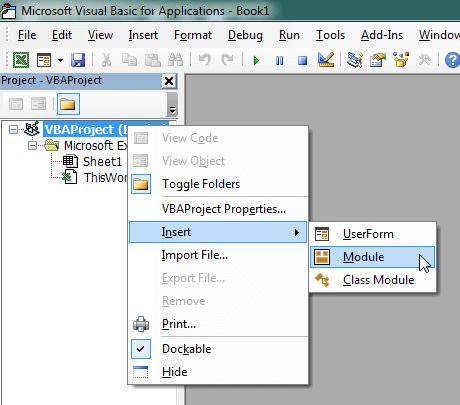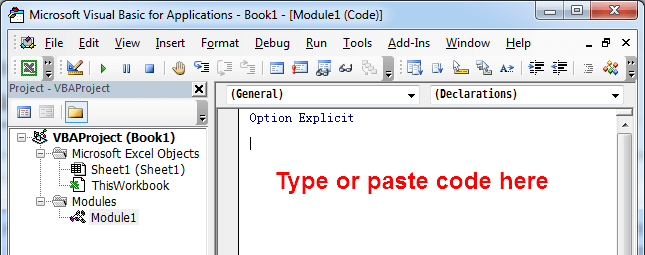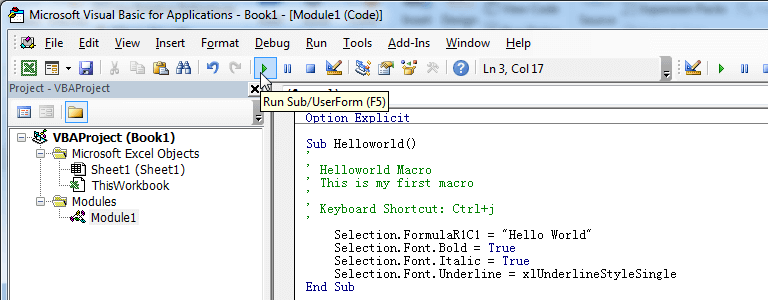Enabling trust access to the VBA project object model allows you to write automated Excel programs and manipulate the VBA environment and object model.
Method 1: SendKeys
This method uses SendKeys to try this trick. However, SendKeys is unstable, so don't be surprised if it doesn't work 100% of the time.
Enable Trust Access to the VBA Project Object Model
'------------------ Modules ------------------
Sub EnableTrustAccess()
Dim intCount As Integer
On Error GoTo Error
intCount = ActiveWorkbook.VBProject.VBComponents.count
Exit Sub
Error:
Application.SendKeys ("%tms%v~")
End SubHow This Macro Works
We ues ActiveWorkbook.VBProject.VBComponents.count to attempt to access VBA Components, If an error occurs: Run-time error'1004: Programmatic access to Visual Basic Project is not trusted, it means that Trust Access to the VBA project object model is disabled. Next, we use SendKeys method to enable it. The parameter of %tms%v~ means:
%tmsopen Trust Center Macro settings.%vselect the Trust Access to the VBA Project Object Model check box.~apply the setting.
Please don’t run this macro directly from your VBA editor. Run this Macro on Developer tab -> Code group -> Macros.
Method 2: modify the registry
Trust Access to the VBA Project Object Model setting is stored in: AccessVBOM under HKEY_CURRENT_USER\SOFTWARE\Microsoft\Office\16.0\Excel\Security, the version number 16.0 here is Office 2016 and later, and different Office versions have different values. The AccessVBOM key value is 1 to enable and 0 to disable.
Enable
Sub EnableAccessVBOM()
Dim oWshell
Set oWshell = CreateObject("WScript.Shell")
oWshell.RegWrite "HKEY_CURRENT_USER\Software\Microsoft\Office\" & Application.Version & "\Excel\Security\AccessVBOM", 1, "REG_DWORD"
Set oWshell = Nothing
End SubDisable
Sub DisableAccessVBOM()
Dim oWshell
Set oWshell = CreateObject("WScript.Shell")
oWshell.RegWrite "HKEY_CURRENT_USER\Software\Microsoft\Office\" & Application.Version & "\Excel\Security\AccessVBOM", 0, "REG_DWORD"
Set oWshell = Nothing
End SubHow to Use This Macro
Most VBA code should be placed in Standard Modules unless specified.
If you see a comment '------------------ Modules------------------ in the code header that means put the code in a Standard Module. For more information, learn this course: Where should I put the Excel VBA code?
The following steps teach you how to put VBA code into a Standard Module:
- Activate the Visual Basic Editor by pressing ALT + F11.
- Right-click the project/workbook name in the Project Window.
- Choose Insert -> Module.

- Type or paste the code in the newly created module. You will probably need to change the sheet name, the range address, and the save location.

- Click Run button on the Visual Basic Editor toolbar.

- For more information, learn this course: Programming with Excel VBA